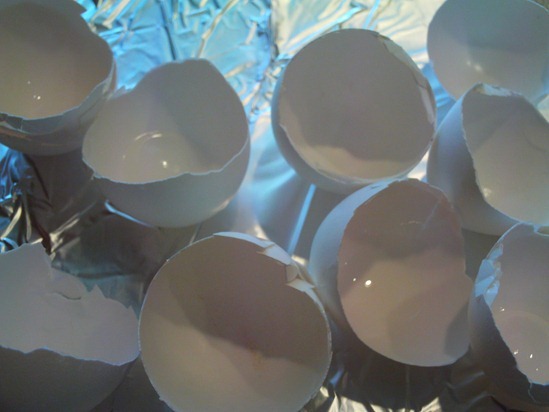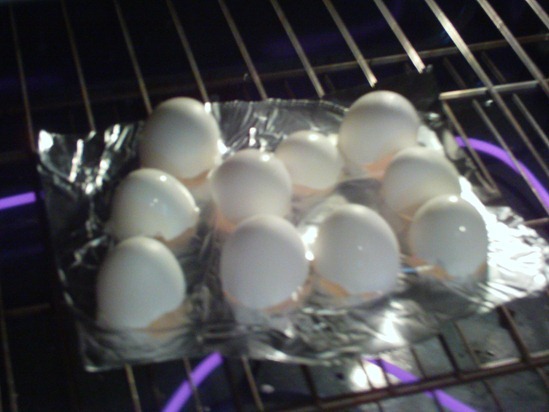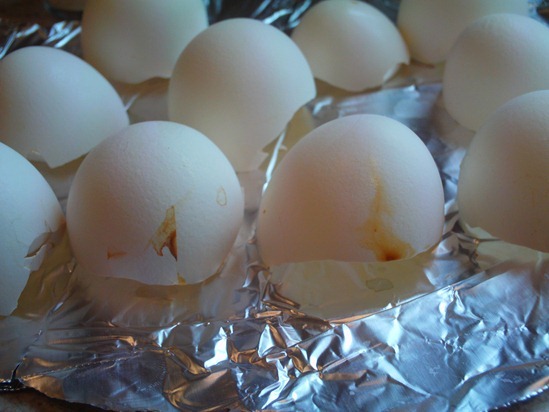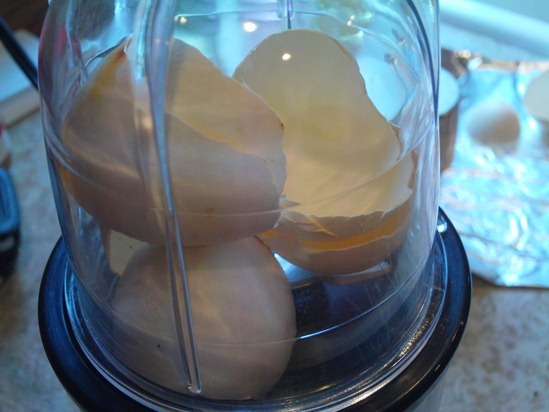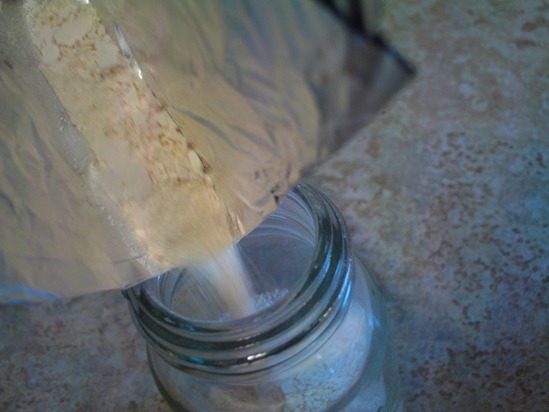Nutrient density of vegetables in your garden
10.9 years ago broccoli, leaves, lettuce, nutrients, parsley, pumpkin, Uncategorized

Just out of curiosity I got my hands on the USDA food database and had a little fun in Excel and the results were pretty interesting. Assuming I wanted to figure out what vegetables I could grow in my garden had the highest nutrient density. I wrote a formula for each nutrient from Vitamin A to Zinc what percentage rank across all of the foods did the item have. I then summed up these percentages based on 100 calories consumed to create an overall score and grouped by average across the categories as a “Nutrient Density Score.”
The results were pretty interesting and discovered some new plants I should try consuming this year.
Top 10 most nutrient dense vegetables
| Rank | Vegetable | Score | Nutrients with significant content |
| 1 | Pumpkin leaves | 24.0 | Potassium, Phosphorus, Magnesium, Leucine, Tyrosine, Threroline, Isoleucine, Phenylalanie |
| 2 | Spinach | 23.4 | Calcium, Potassium, Phosphorus, Zinc, Folate, Magnesium, Beta carotene, Tyrosine, Threroline, Isoleucine |
| 3 | Mustard Greens | 23.0 | Calcium, Potassium, Phosphorus, Vitamin C, Vitamin A, Folate, Beta carotene, Tyrosine, Arginine |
| 4 | Broccoli | 23.0 | Calcium, Phosphorus, Zinc, Pantothenic acid, Folate, Aspartic acid, Glutamic acid, Valine |
| 5 | Asparagus | 22.6 | Phosphorus, Potassium, Zinc, Copper, Selenium, Niacin, Folate, Aspartic acid, Glutamic acid |
| 6 | Turnip Greens | 22.6 | Calcium, Potassium, Beta carotene, Tyrosine, Threroline, Isoleucine, Phenylalanie, Leucine, Valine |
| 7 | Pak-Choi | 22.3 | Calcium, Phosphorus, Potassium, Vitamin C, Folate, Beta carotene, Glutamic acid, Isoleucine, Alanine |
| 8 | Swiss Chard | 21.5 | Magnesium, Phosphorus, Potassium, Copper, Beta carotene, Isoleucine, Phenylalanie |
| 9 | Green Leaf Lettuce | 21.5 | Phosphorus, Potassium, Manganese, Vitamin A, Beta carotene, Isoleucine |
| 10 | Beet Greens | 21.4 | Calcium, Phosphorus, Potassium, Zinc, Copper, Manganese, Pantothenic acid, Beta carotene |
As you can see everything in the top ten is at least the color green with most of the plants being leafy vegetables. Some honorable mentions rounding up the top 20: Chives, Kale, Zucchini, Corn salad, Okra, Cauliflower Greens, Parsley, Mushrooms, Collards, Red leaf Lettuce.
So as you know vegetables contain the most nutrients the shorter the time between they are harvested and then consumed so anywhere you can shave off a few hours of this process is to your advantage, so to benefit the most for the nutrients in your food some of the above plants are some great options.
So how about the bottom, or the top ten least nutrient dense vegetables in your garden?
Bottom 10 least nutrient dense vegetables
| Rank | Vegetable | Score |
| 1 | Indian Squash | 8.4 |
| 2 | Shiitake Mushrooms | 9.4 |
| 3 | Potatoes | 9.5 |
| 4 | Jerusalem Artichoke | 9.6 |
| 5 | Parsnips | 9.7 |
| 6 | Lemon grass | 9.7 |
| 7 | Pumpkin flowers | 10.3 |
| 8 | Arrowroot | 10.8 |
| 9 | Tomatillos | 10.9 |
| 10 | Rhubarb | 10.9 |
Now don’t get me wrong many of the plants in the above list may still have plenty of nutritional value it is just that compared to the competition they lack the shear concentration of nutrition and the diversity across the spectrum.
I know for me I am planning on trying some pumpkin leaves this year. Sounds like you just dice them up and sauté with some oil and throw in some garlic at the end and sounds like the leaves should actually be pretty sweet tasting…I will be sure to post of the success or failure of cooking pumpkin leaves.
Testing your garden soil
11.1 years ago nutrients, soil test

I always am good about amending my soil whether it is grabbing a bag of spent coffee beans from Starbucks whenever I notice them there, few handfuls of alfalfa pellets at the beginning of spring, or compost when it becomes ready in my bin. the thing I neglected to do was actually test my soil to see how I am doing.
The process to do this is actually pretty simple. You first start by getting a sample of your soil. If you have a very large garden it is a good idea to take multiple samples and mix them together for a single combined sample. What I decided to do was prepare my soil as if I was going to plant some seeds (turn up the soil with a claw, smooth it out, etc) then I took a sample about 6-7 inches deep and placed it in an old container than I am pretty sure held baby spinach.

Next comes the fun sciencey stuff, for the pH test you fill one of the cylinders to the first line with soil, add contents of one of the “green” capsules and fill to the fourth line with filtered/distilled water and shake vigorously.

For N/K/Potash tests the process is somewhat similar where you take one part soil to 4 parts water. For this I grabbed an old juice container from the recycling bin. Added the appropriately measured parts and shook for a good couple minutes, which was much more of a workout as the tiny vial… I then let the soil settle and came back 10 minutes later to see perlite floating on the surface and the water still a bit cloudy…think it was the coffee ground…

I then took a tea strainer, which I am pretty confident I have never used for straining tea, and poured some of the slightly cloudy water into a clean container to remove the perilite. I then filled each of the files to the appropriate (4th) line and added the color coded capsules to each of the vials. After 10 minutes of waiting I had my results…

So here is what I discovered:
- pH: Pretty much perfect, basically neutral maybe a bit on the acidic side but good range for most all vegetables
- Nitrogen: Though this shows a little color it started out a bit on the brown side so really this was almost no change so appears even with my amendments I am still very low on nitrogen.
- Phosphorus: Basically off the charts no need to add an more here…
- Potash: This one looks decent, probably could amend some here but really something I am worried about.
So for me this quick $4 soil test brought me some great information and will plant to give my garden some additional nitrogen boosts throughout the season.
How to use egg shells in your vegetable garden
13.8 years ago calcium, egg shells, nutrients
Egg shells are a great additive to increase the calcium content in the soil of your vegetable garden. Calcium is important to plants specifically because it helps with cell wall structure imperative for strength of plants. There are many specific plants that respond well calcium supplementation: apples, broccoli, brussel sprouts, cabbage, carrots, cauliflower, celery, cherries, citrus, conifers, cotton, curcurbits, melons, grapes, legumes, lettuce, peaches, peanuts, pears, peppers, potatoes, tobacco, and tomatoes [1]
Now you know why you need calcium in your garden, now lets talk about how you can make your own calcium supplement at home from egg shells heading to your trash.
1. When cooking eggs for breakfast or baking rinse them quickly. They do not have to be spotless just enough so they will not create an odor.
2. Lay the shells on a cookie sheet or a piece of aluminum foil in your oven for 5-6 minutes at 350 degree F until the egg shells start to brown. I normally do this when I am doing some baking and throw them in while the oven is preheating, by the time I am ready to bake the eggs are ready to go.
3. At this point (after they cool for a few minutes) you can simply put the shells in a plastic bag and roll them out with a rolling pin, though the smaller you break up the shells the easier it is to leech the calcium out of them. For this reason I like to use my Magic Bullet using the grinding attachment to really pulverize the shells into powder.
4. Place the egg shells into a sealed container for future use. I used the same aluminum foil I used to bake them to funnel the powder into an old spice container.
How to use your ground Egg Shells:
1. Sprinkle a couple of teaspoons into planting holes when transplanting new seedlings
2. Sprinkle on surface and gently work into soil when tomatoes are beginning to flower to prevent blossom end rot and promote overall health of the plant
3. Add 2 tsp of egg shells to 1 liter of water and let them sit for 24 hours, apply directly to plants
4. Add ground egg shells to your compost bin.
5. Sprinkle around plants to deter slugs
Cost of Hydroponic Nutrients
14.3 years ago cheap, hydroponics, nutrients
The first time you walk into a hydroponic store there can be a little sticker shock. At first it doesn’t look too bad, $14 for this bottle…oh wait I have to buy these three as well and you leave the store paying $80 to grow some basil and lettuce. Being cheap I like to know how much I will be spending on a hobby before I start out so I did a little exercise.
I took a look at the major nutrient manufacturers and determined using their recommended feeding schedule what it would cost per gallon to complete a 4 week vegetation cycle and a 8 week vegetable and bloom cycle.
To be fair I only included products that provided the primary/secondary macronutrients and micronutrients. Though I am not discounting the effectiveness of various supplements that these companies provide and I wanted to stick with the basics and have a close to an apples to apples comparison as possible.
| Avg, Price | Size | Nutrients Used over 4 weeks (Veg Only) |
Cost per Gallon of mixed nutrients | Nutrients Used over 8 weeks (Veg/Bloom) |
Cost per Gallon of mixed nutrients | |
| General Hydroponics |
$ 1.08 | $ 2.80 | ||||
| FloraGrow | $ 12.50 | qt | 8.08 tsp | $ 0.53 | 12.12 tsp | $ 0.79 |
| FloraBloom | $ 12.50 | qt | 2.02 tsp | $ 0.13 | 14.14 tsp | $ 0.92 |
| FloraMicro | $ 15.95 | qt | 5.05 tsp | $ 0.42 | 13.13 tsp | $ 1.09 |
| Dutch Nutrient Formula |
$ 0.82 | $ 2.30 | ||||
| Advance Grow A |
$ 7.50 | L | 11 tsp | $ 0.41 | 11 tsp | $ 0.41 |
| Advance Grow B |
$ 7.50 | L | 11 tsp | $ 0.41 | 11 tsp | $ 0.41 |
| Advance Flower A |
$ 7.50 | L | 0 tsp | $ – | 20 tsp | $ 0.74 |
| Advance Flower B |
$ 7.50 | L | 0 tsp | $ – | 20 tsp | $ 0.74 |
| Dyna-Gro |
$ 0.66 | $ 2.03 | ||||
| Liquid Grow |
$ 15.00 | qt | 3.5 tsp | $ 0.27 | 3.5 tsp | $ 0.27 |
| Liquid Bloom |
$ 18.95 | qt | 0 tsp | $ – | 7 tsp | $ 0.69 |
| Mag-Pro |
$ 17.95 | qt | 0.875 tsp | $ 0.08 | 3.875 tsp | $ 0.36 |
| Pro-TeKt |
$ 13.90 | qt | 4.25 tsp | $ 0.31 | 9.75 tsp | $ 0.71 |
At first glance these numbers look pretty promising, until you remember the fact that this is the cost per gallon. So if you had a 40 gallon reservoir this can make your cost obvious jump up significantly. Fortunately in my case I only fill my tank up to 9 gallons so a 4 week cycle would cost me on average $7.68 for a 4 week vegetative cycle or $21.39 for a 8 week vegetative and bloom cycle.
Now given I am planning on growing some legal herbs in my hydroponic system (basil/oregano/cilantro) and maybe a little lettuce. This would result in some pretty expensive produce. For this reason and that fact I love chemistry and don’t get to play with it much these days I am planning on going for the less expensive homemade nutrient route, which I will provide more details once I get some more conclusive results of success or failure…
Tags: cheap, cilantro, herb garden, vegetables
